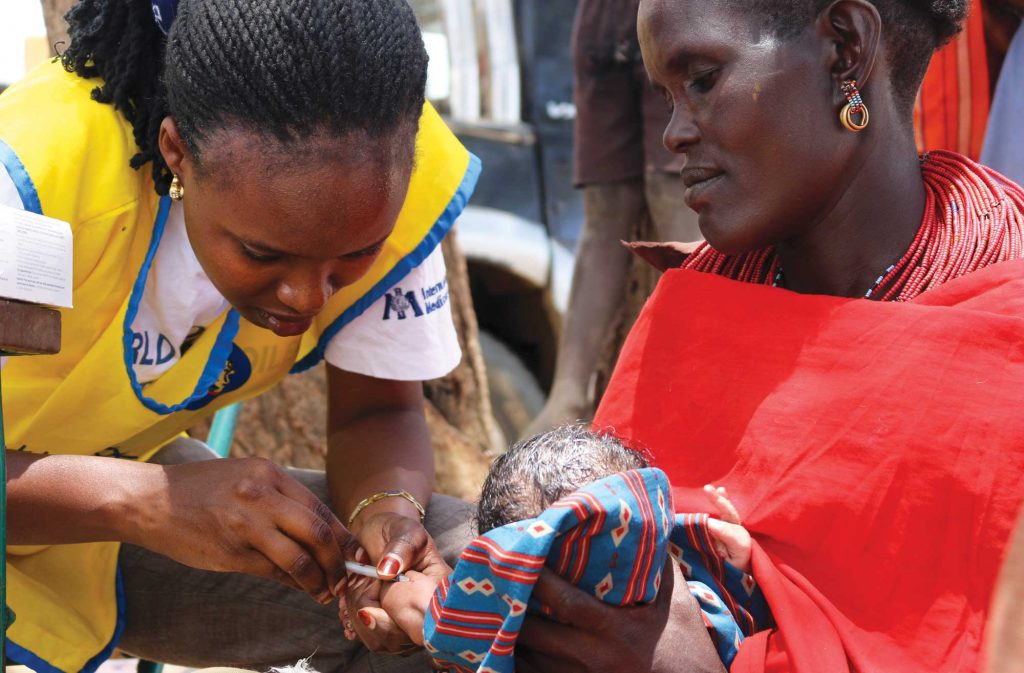
Kenya
Kenya is one of the most popular destinations in Africa for westerners, who are drawn by the country’s rich culture, spectacular wildlife parks, relatively easy accessibility and—until recently—political stability. Yet violence following Kenya’s 2007 elections left approximately 1,000 people dead, hundreds of thousands of people displaced, and the nation reeling. Kenya also hosts a quiet killer: HIV/AIDS. With one of the world’s highest HIV/AIDS rates, an estimated 1.5 million Kenyans are infected. International Medical Corps began its work in Kenya in 1998 following the deadly terrorist attacks on the US Embassy in Nairobi. Since then, International Medical Corps has responded to manmade and natural disasters in Kenya with critical lifesaving services as well as the long-term development challenges facing the country. Today, International Medical Corps’ focus in Kenya is on improving maternal and child health through nutrition services.

46 million
537,021
39.38 deaths
per 1,000 live births
The Challenges
Our Response

Nutrition
International Medical Corps is currently working in seven counties to improve maternal and child health through nutrition interventions. This involves supporting the Ministry of Health as well as working with local organizations and other sectors such as Agriculture, Education and National Drought Management Authority to build capacity, strengthen health systems, build community resilience and advocate for resources for progressive nutrition investment.
As part of a consortium with the Kenya Red Cross and the local organization Community Action for Rural Development, International Medical Corps is reducing child stunting through better access to nutrition services. The program also advocates for stronger political commitment to reducing malnutrition and child stunting at the county level and strengthens existing health systems to better understand how nutrition service delivery is working in health facilities.
International Medical Corps has been supporting the government of Kenya Ministry of Health to enhance on food fortification program in Kenya. The program was implemented across the 47 counties in Kenya and focused on improving micronutrient levels in foods, specifically salt iodization.
In Kitui County, where stunting levels are estimated to be 46 percent, International Medical Corps is working with two partners to implement a two-year research study, funded by UNICEF’s EU-SHARE, to establish whether increasing cash and giving nutrition counselling improves the nutritional outcomes.



